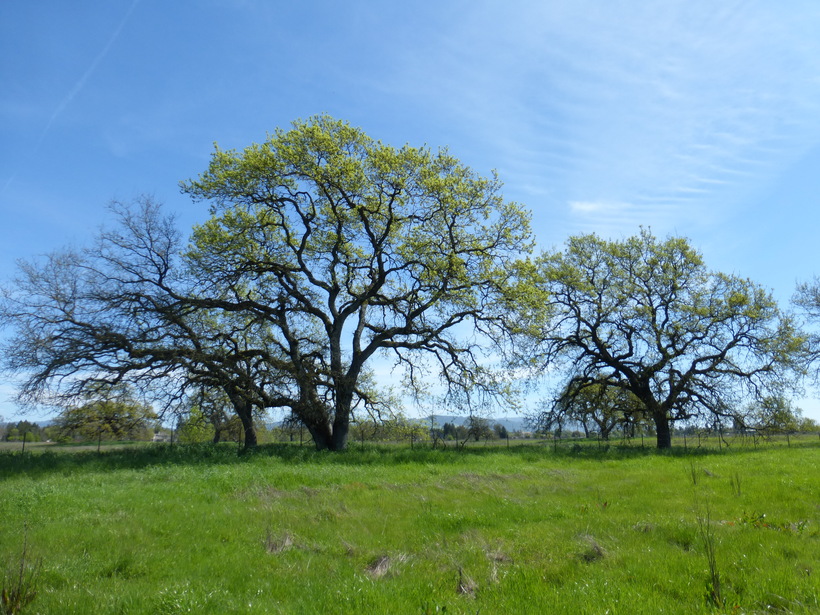
Valley oak can only be found in California, but it may be the largest of all the North American oaks.
FAMILY
Fagaceae, the oak family
RANGE
Endemic to California, from Los Angeles County in the south to Shasta County in the north, as well as the Santa Cruz and Santa Catalina Islands
Important Environmental Factors

Moderate to high seasonal variation in temperature

Low elevation above sea level

At least 500 millimeters rainfall per year
Appearance
Valley oaks are large, long-lived deciduous trees that can grow 30 to 75 feet tall. Their roots can grow as deep as 80 feet underground. They are typically found in riparian forests (e.g. on stream levees or high floodplains) or in valley oak woodlands, a mix of scattered oaks and grassland.
Ecology
Valley oak woodlands and riparian areas provide habitat for numerous wildlife. Dozens of bird species have been found nesting in valley oaks, and many birds and mammals (including black-tailed deer, pocket gophers, ground squirrels, and feral pigs) feed on valley oak acorns, which are larger than most other oak acorns (up to 2″ long). Seed-caching (or burying) by animals like the California ground squirrel and scrub jay is actually beneficial to the valley oak, as these buried acorns then have a higher chance of germinating.
Threats
Many valley oak woodlands have been cleared for farmland. Though once more extensive throughout California, they have been reduced to scattered patches, or single trees in pastures or agricultural land. The current population of valley oaks struggles with regeneration (i.e. reproduction), as young oak seedlings have high mortality rates due to competition with weeds or grazing by livestock. Drought and groundwater depletion have also been problematic. Though valley oaks are naturally resistant to drought in the short-term, a combination of multiple dry seasons plus significantly lowered water tables can kill or damage the trees. Additionally, warming temperatures due to climate change could further stress California’s valley oaks.

Data source:
Species records for distribution model provided by Calflora
References: